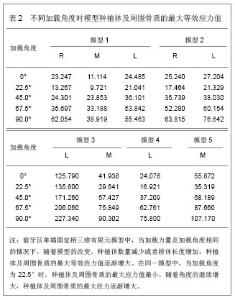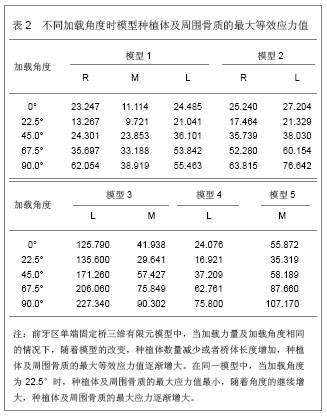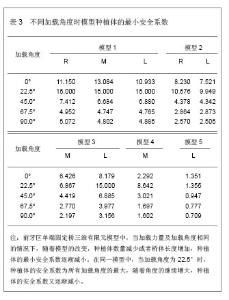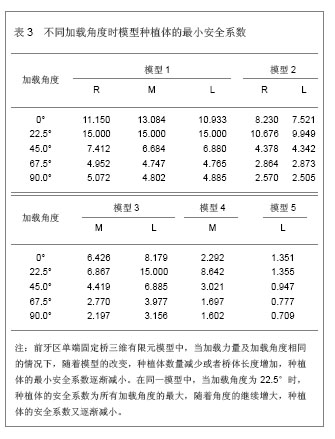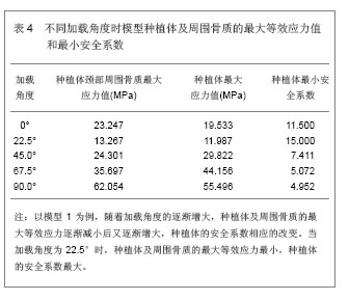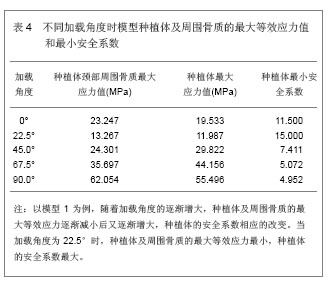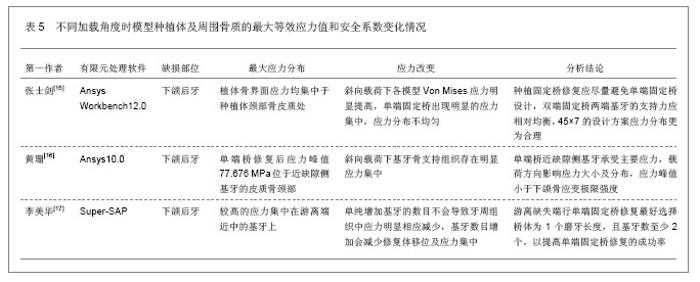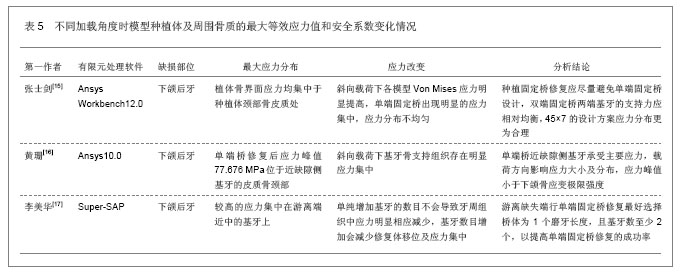| [1]沈庆平,吴伟恂,蔡展文,等.Brånemark种植固定义齿游离臂长度对应力分布影响的三维有限元分析[J].中国口腔种植学杂志, 2003,8(1):25-28.[2]Huiskes R, Chao EY. A survey of finite element analysis in orthopedic biomechanics: the first decade. J Biomech. 1983; 16(6):385-409.[3]朱静.有限元分析方法在口腔临床中的应用进展[J].上海生物医学工程,2003,24(3):53-56.[4]李青奕,董寅生,陈文静,等.预加载“L”形曲力学行为的有限元分析[J].口腔医学,2004,24(1):44-46.[5]许文翠,陈文静,董寅生,等.垂直曲的力学行为的研究[J].口腔医学, 2002,22(1):31.[6]Lin D, Li Q, Li W, et al. Dental implant induced bone remodeling and associated algorithms. J Mech Behav Biomed Mater. 2009; 2(5):410-432.[7]O'Mahony AM, Williams JL, Spencer P. Anisotropic elasticity of cortical and cancellous bone in the posterior mandible increases peri-implant stress and strain under oblique loading. Clin Oral Implants Res. 2001;12(6):648-657.[8]Oguz K, Yuzbasloglub E, Erzincanl F. Static, dynamic and fatigue behaviors of dental implant using finite element method. Advances in Engineering Software. 2006;37: 649-658.[9]Borchers L, Reichart P. Three-dimensional stress distribution around a dental implant at different stages of interface development. J Dent Res. 1983;62(2):155-159.[10]Tada S, Stegaroiu R, Kitamura E, et al. Influence of implant design and bone quality on stress/strain distribution in bone around implants: a 3-dimensional finite element analysis. Int J Oral Maxillofac Implants. 2003;18(3):357-368.[11]杨萍.单端固定桥修复后牙游离端缺失的三维有限元分析[D].陕西:第四军医大学,2007:6-9.[12]固定桥.机械力学和生物力学分析[DB/OL].2012-01-09. http://unit.xjtu.edu.cn[13]郭莹.动态载荷下单端桥基牙牙周膜应力的三维有限元法分析[D].广东:暨南大学,2008:4-6.[14]Davis DM, Zarb GA, Chao YL. Studies on frameworks for osseointegrated prost heses: Part 1.The effect of varying the number o f support ing abutment. Int J Oral M xaillofac Implant.1988;3(3):197-201.[15]张士剑,包晓亮,蔺增,等.不同种植方式修复下颌后部游离缺失的三维有限元分析[J].口腔医学,2011,31(1):12-15.[16]黄珊,唐亮,潘燕环,等.下颌后牙单端桥基牙骨支持组织应力的动力学分析[J].中国病理生理杂志,2012,28(3):524-527.[17]李美华,王伟,董丽华,等.用三维有限元方法对单端固定桥进行应力分析[J].口腔医学纵横.2000,16(3):197-199.[18]Chun HJ, Shin HS, Han CH, et al. Influence of implant abutment type on stress distribution in bone under various loading conditions using finite element analysis. Int J Oral Maxillofac Implants. 2006;21(2):195-202.[19]Chaichanasiri E, Nanakorn P, Tharanon W, et al. Finite element analysis of bone around a dental implant supporting a crown with a premature contact. J Med Assoc Thai. 2009; 92(10):1336-1344.[20]Guda T, Ross TA, Lang LA, et al. Probabilistic analysis of preload in the abutment screw of a dental implant complex. J Prosthet Dent. 2008;100(3):183-193. |
